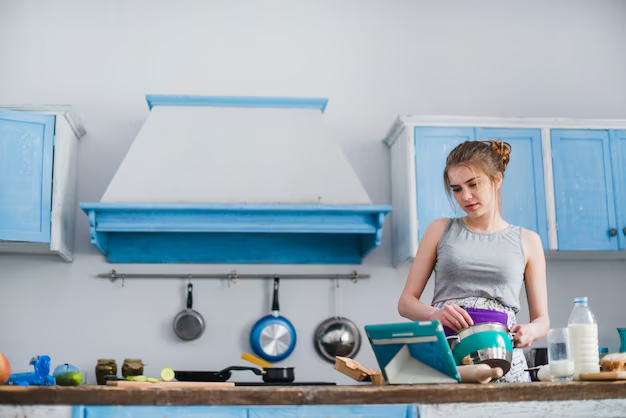Master the Art of Drawing a Refrigerator: Step-by-Step Guide
Attempting to draw everyday objects can be surprisingly both challenging and rewarding. Among these items, a refrigerator's structured lines and geometric shapes make it a perfect subject for artists seeking to hone their skills. Whether you're an aspiring artist or just looking to improve your drawing proficiency, learning how to draw a refrigerator can enhance your understanding of perspective, proportions, and texture representation. In this comprehensive guide, we will explore the step-by-step process of drawing a refrigerator, delve into related artistic techniques, and provide practical tips for mastering this skill.
🖌️ Setting the Stage: Why Draw a Refrigerator?
Before diving into the drawing process, you might ask yourself why a refrigerator is a worthy object of your artistic attention. Refrigerators have a unique combination of rectangles, lines, and curves, making them an excellent subject to practice:
- Perspective Drawing: Understanding and utilizing vanishing points and horizon lines.
- Proportions: Balancing height, width, and compartment dimensions.
- Material Texture: Experimenting with hard surfaces and light reflection.
Engaging with these elements not only hones your technical skills but also encourages a deeper appreciation for the form and function of everyday objects.
✏️ Tools and Materials You Will Need
Before you start drawing, ensure you have the necessary tools at hand. Here are some basics:
- Pencils (HB, 2B, and 4B): For sketching, shading, and adding depth.
- Eraser: A soft eraser for corrections and highlights.
- Ruler: Essential for straight lines and measurements.
- Paper: A smooth texture like newsprint or drawing paper.
Having the right tools will ensure that you can focus on developing your drawing without being hampered by inadequate equipment.
📏 How to Draw a Refrigerator: Step-by-Step Process
H2: Step 1: Sketch the Basic Outline
Start with the basic shape of the refrigerator by drawing a large rectangle. This will be your refrigerator's main body. Lightly sketch this with a pencil:
- Draw a Vertical Line: This will be one side of the refrigerator.
- Use a Ruler: Extend lines horizontally from the top and bottom of the vertical line.
- Complete the Rectangle: Add another vertical line to form a rectangular shape.
H2: Step 2: Adding Depth with Perspective
To create a realistic refrigerator, understanding perspective is crucial. This involves slightly angling the object's lines away from the viewer to suggest three-dimensionality.
- Vanishing Points: Decide on two vanishing points on your drawing horizon.
- Angling the Sides: Draw lines from the ends of your rectangle towards these points.
- Creating the Top: Connect these lines to form the top and side planes of the refrigerator.
H2: Step 3: Define Doors and Compartments
Now, segment your refrigerator to show where the doors and compartments are. This helps create more realistic proportions.
- Draw Horizontal Lines: Divide the rectangle into top (freezer) and bottom (main compartment) sections.
- Show Door Handles: Sketch small rectangles or curved lines where the handles will be.
- Add Details: Outline shelves and compartments inside, where visible.
H2: Step 4: Texture and Shading
Addressing texture and shading can bring life to your drawing, making it more vivid and realistic.
- Identify Light Source: Decide where the light is coming from.
- Shade Accordingly: Use softer pencils (e.g., 2B or 4B) to create light and shadow. Focus on one side being darker to suggest depth.
H2: Step 5: Add Final Details
Consider adding small details that enhance realism but also showcase your style.
- Textured Surfaces: Illustrate brushed metal finishes with subtle, fine lines.
- Door Seals and Frames: Add thickness to the door frames and emphasize the rubber seals.
- Reflective Surfaces: Utilize an eraser to create slight reflections or bright spots.
🎯 Overcoming Common Challenges
Drawing a refrigerator can present several challenges. Here are some common issues and how to address them:
- Disproportionate Shapes: Always cross-check your measurements with a ruler. Proportion is key in geometric drawings.
- Undistinguished Textures: Practice different shading techniques. Hatching, cross-hatching, and stippling can help differentiate textures.
- Perspective Mistakes: Use vanishing points consistently to maintain the illusion of depth and solidity.
📊 Practical Tips for Artistic Success
Integrate the following strategies to enhance your drawing skills:
- Observe Real Models: Study a real refrigerator or online images to understand unique features and proportions.
- Regular Practice: Draw different models to challenge your perspective and proportion techniques.
- Seek Constructive Feedback: Share your drawings with peers or online communities for insights and improvement suggestions.
By incorporating these strategies, you'll grow both in confidence and technical ability.
📝 Visual Summary: Key Steps to Drawing a Refrigerator
Here's how you can succinctly remember the entire process:
🛠️ Tools Needed:
- Pencils (HB, 2B, 4B)
- Eraser
- Ruler
- Drawing Paper
📋 Essential Steps:
- Outline Rectangle: Define refrigerator's main shape.
- Add Perspective: Introduce depth with angled lines.
- Segment Compartments: Show door and compartment divisions.
- Texture/Shade: Enhance realism with shading techniques.
- Detail Finishing: Focus on handles, seals, and reflections.
🪄 Tips for Mastery:
- Use real-world references
- Consistent practice
- Seek feedback from fellow artists
🚀 Elevate Your Drawing Skills
With perseverance and attention to detail, drawing a refrigerator can be a rewarding exercise in pushing your artistic boundaries. As you experiment with various techniques and overcome challenges, you'll not only refine your skills but also gain greater insight into how everyday objects interact with light and space. Keep exploring, practice consistently, and embrace each new opportunity to learn—your artistic journey awaits!
